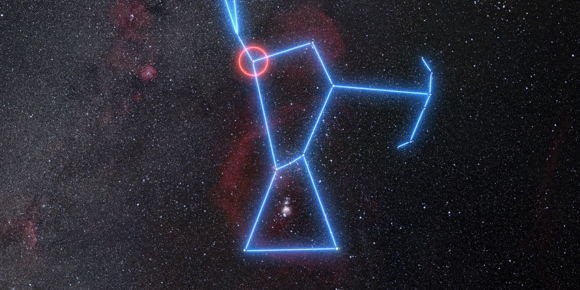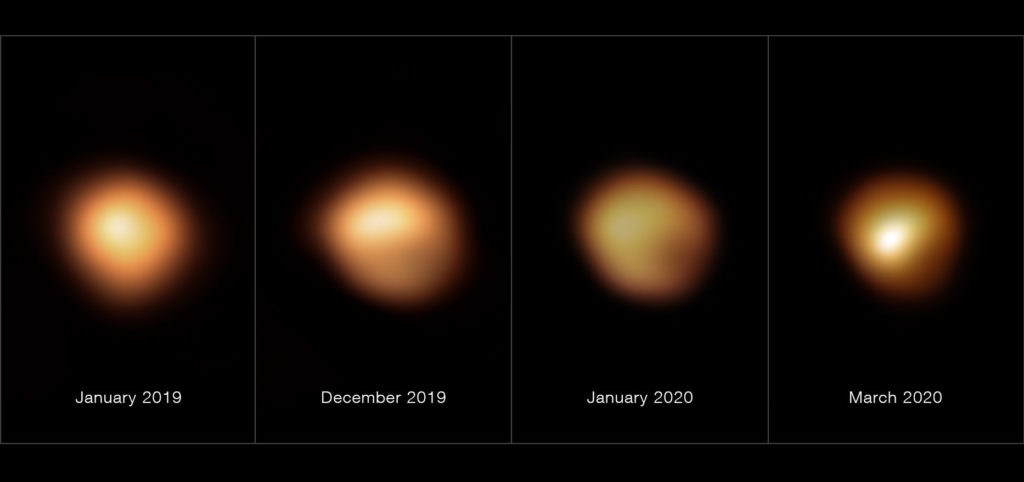Betelgeuse is the kind of star called a red supergiant – it’s the brightest star in the constellation of Orion, and the tenth-brightest in our night sky, from a distance of 642.5 light years.
At the end of 2019 continuing into 2020, however, Betelgeuse suddenly became less bright, in an event astronomers, with a sense of the apocalyptic, called ‘the Great Dimming’. What could it mean?
One theory was that the star was on the point of turning into a supernova, as is the way of red supergiants, although that is not expected to happen for another 100,000 years. An event like that taking place in 1379 but only noticed now would have been well off-schedule.
But now astronomers from the university of Leuven have solved the mystery: stardust. The most prosaic substance in the universe, given (in English, at least) the most romantic of names.
The discovery came as a result of images of Betelgeuse taken by the Very Large Telescope (VLT) of the European Southern Observatory (ESO) on Cerro Paranal, a mountain in Chile.
For those who may wonder how large is very large, the ESO explains:
“The Very Large Telescope array (VLT) is the flagship facility for European ground-based astronomy at the beginning of the third Millennium. It is the world's most advanced optical instrument, consisting of four Unit Telescopes with main mirrors of 8.2m diameter and four movable 1.8m diameter Auxiliary Telescopes.”
Observations began in late 2019, comparing images from then from images from before, and the dimming was clear. As observations continued into 2020, the dimming continued. Then in April 2020, things were back to normal.
“It is very rare that we see the appearance of a star change on a time scale of several weeks,” said Miguel Montargès of the Paris Observatory, at the time of the study working at KU Leuven.
“The instruments of ESO's Very Large Telescope enabled us to not only observe the star as a point, but also see the details on its surface and monitor it throughout the event.”
Mystery solved: the Great Dimming was the result of a cloud of stardust, expelled from the star when it underwent a significant cooling on its surface.

Image shows the position of Betelgeuse in the constellation of Orion © ESO
“Betelgeuse's surface is regularly changed by the movements of giant shrinking and swelling gas bubbles that bubble up from its interior, similar to the bubbles in a pot of boiling water,” the university explained in a press release.
“The team concluded that the star had ejected a large gas bubble shortly before the great eclipse, which then moved further away from the star. When part of the star's surface cooled shortly afterwards, the gas condensed into solid particles.”
Lovers of astronomy will recall another occasion when gas was ejected by a star, cooled and became solid particles. One of those particles we know by the name of Earth.
The research is published in the journal Nature.

